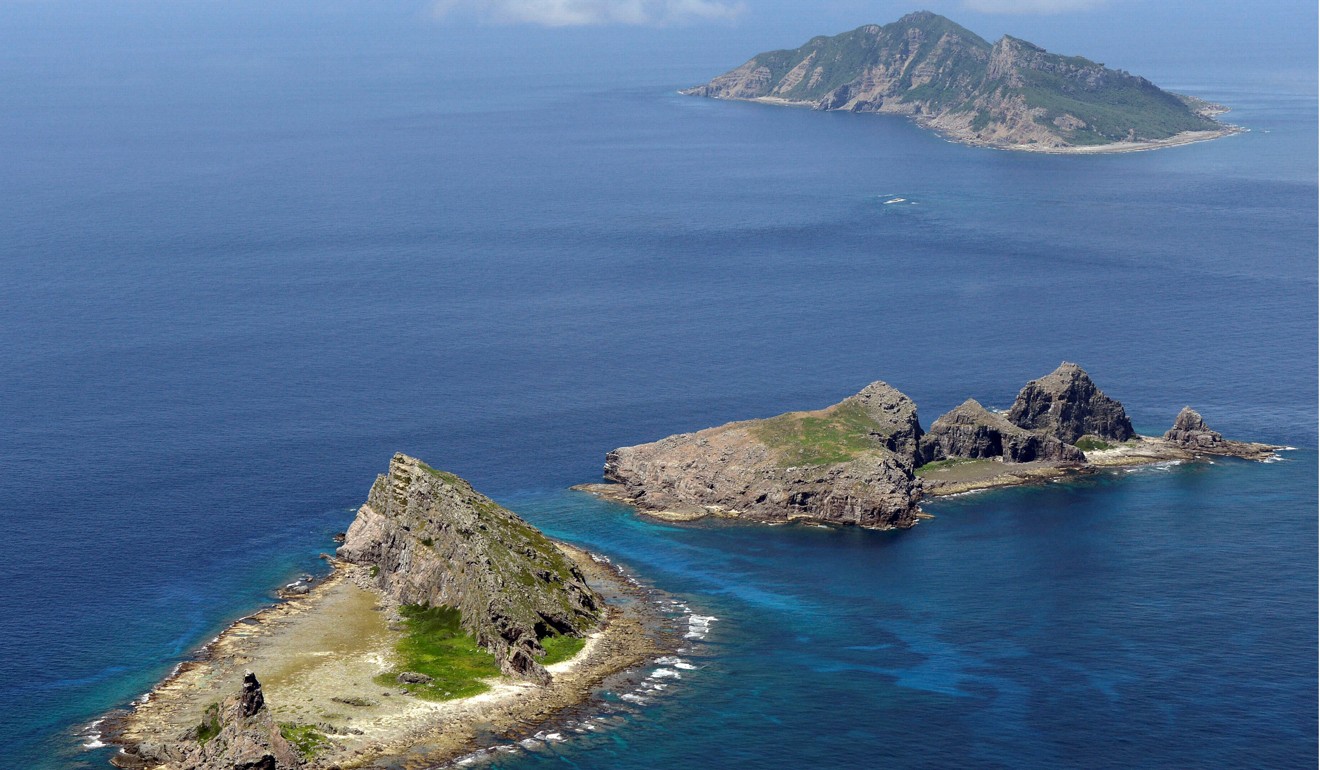
How a long-awaited hotline could pave the way for calmer China-Japan relations
Japan and China should use a new maritime and aerial communication mechanism to manage disputes with ‘professionalism, dialogue and diplomacy’, Michael Kovrig writes
Clouds of anxiety in East Asia over Donald Trump’s hawkish policy shifts showed a silver lining this past week with the first official visit by a Chinese leader to Japan in eight years. Premier Li Keqiang’s constructive meetings with Prime Minister Shinzo Abe were a welcome indication of progress after a year of intense bilateral diplomacy.
While some of this warming is rhetorical and reversible, there was at least one durable deliverable worth applauding: an agreement to set up within 30 days a maritime and aerial communication mechanism to avoid accidental encounters.
The new hotline it includes will connect Chinese and Japanese military chiefs via their embassies, enabling faster and smoother communication between decision-makers in case of an incident at sea or in the air.

The pact also commits defence officials to hold regular meetings and implements a mechanism for their naval ships to communicate directly, in line with the code for unexpected encounters at sea, to which both are party.
The need for such crisis management channels is growing: China’s ambition is to become a maritime great power with a true blue-water navy. Its massive shipbuilding capacity has created the largest fleet in Asia, with some 300 vessels, while modernisation and reforms are increasing the range, frequency and complexity of operations.
Fukushima officials hopeful as China mulls end to food ban
Japan has responded with its own modest defence budget increases. It plans new bases and missile deployments to the Ryukyu (Nansei) islands, which separate the East China Sea from the Pacific Ocean. PLA ships and planes increasingly seek to transit the air and waters of the adjacent Miyako Strait to drill in the Western Pacific.

The PLA Air Force is likewise sending more pilots out over open water. Japan’s Self-Defence Force scrambles fighter jets when unidentified aircraft approach its air defence identification zone. In 2017 there were 500 such intercepts for PLA aircraft, and that number is likely to increase.
One of the big challenges captains face is understanding the intentions of another captain. Last year’s fatal collisions involving the USS Fitzgerald, the USS John S. McCain and two merchant ships illustrate the danger.
China and Japan agree to set up hotline to prevent military clashes
In the geopolitically roiled waters of the East China Sea and South China Sea, where ships may be used to create “facts on the sea” that assert national presence, misunderstandings can lead to deadly escalation. A hotline could help overcome language barriers and clarify whether an action is a deliberate exercise of policy or freelancing.
Despite the evident need, it has taken Beijing and Tokyo a decade to reach agreement. The major sticking point has been their dispute over five islets and three rocks in the East China Sea that China calls Diaoyu and claims, and Japan calls Senkaku and controls.
China’s expanding maritime presence may be an inevitable aspect of its economic and geopolitical rise, but need not trigger conflict.
Negotiations halted in 2012 when Japan’s government bought three of the islands from a private owner to keep the nationalist politician Shintaro Ishihara from acquiring them. Beijing responded by declaring an air defence identification zone over most of the East China Sea, implying that it sought dominance and sovereignty over the waters and features below.
China also stepped up its presence around the islands. As recently as this January, sightings of nearby Chinese coastguard vessels, a frigate and a submarine brought protests from Tokyo.
Talks resumed in January 2015 but had been treading water over the past year as China sought to include the Diaoyu/Senkaku in the agreement, while Tokyo worried this move could legitimise Beijing’s claims.
The final text avoids the issue by not specifying the geographical scope of the maritime and aerial communication mechanism.
In April, the two militaries took another positive step by resuming an exchange programme that had been halted since 2012.
China moves to strengthen financial ties with Japan as trade war looms
This summer, both navies again will participate in Rim of the Pacific (RIMPAC) naval exercises sponsored by the US Pacific Fleet.
These opportunities for direct contact, dialogue and training are crucial in building familiarity and mutual confidence – if not actual trust – and should continue, ideally including coastguard personnel. Other governments and organisations could help by sharing best practices through multilateral forums and training opportunities.
Once the hotline becomes active on June 8, Japan and China should keep it open at all times and ensure those responsible can reach both front-line personnel and the top brass quickly in emergencies.
Pilots and captains will need orders to use the common radio frequency and standard signals. Further guidelines and training based on the code for unexpected encounters at sea or the 2014 US-China defence memoranda might help.
The two rare birds that could give a lift to China-Japan ties
China’s expanding maritime presence may be an inevitable aspect of its economic and geopolitical rise. But it need not become a trigger for conflict.
The maritime and aerial communication mechanism is helpful, both as a practical tool and a signal of political intent to prevent clashes. Japan and China should follow it by committing to manage disputes and encounters with professionalism, dialogue and diplomacy, and to have their planes and vessels refrain from risky or intimidating behaviour.
That might truly calm the waters between them.
Michael Kovrig is senior adviser for North East Asia for International Crisis Group, the independent conflict-prevention organisation
